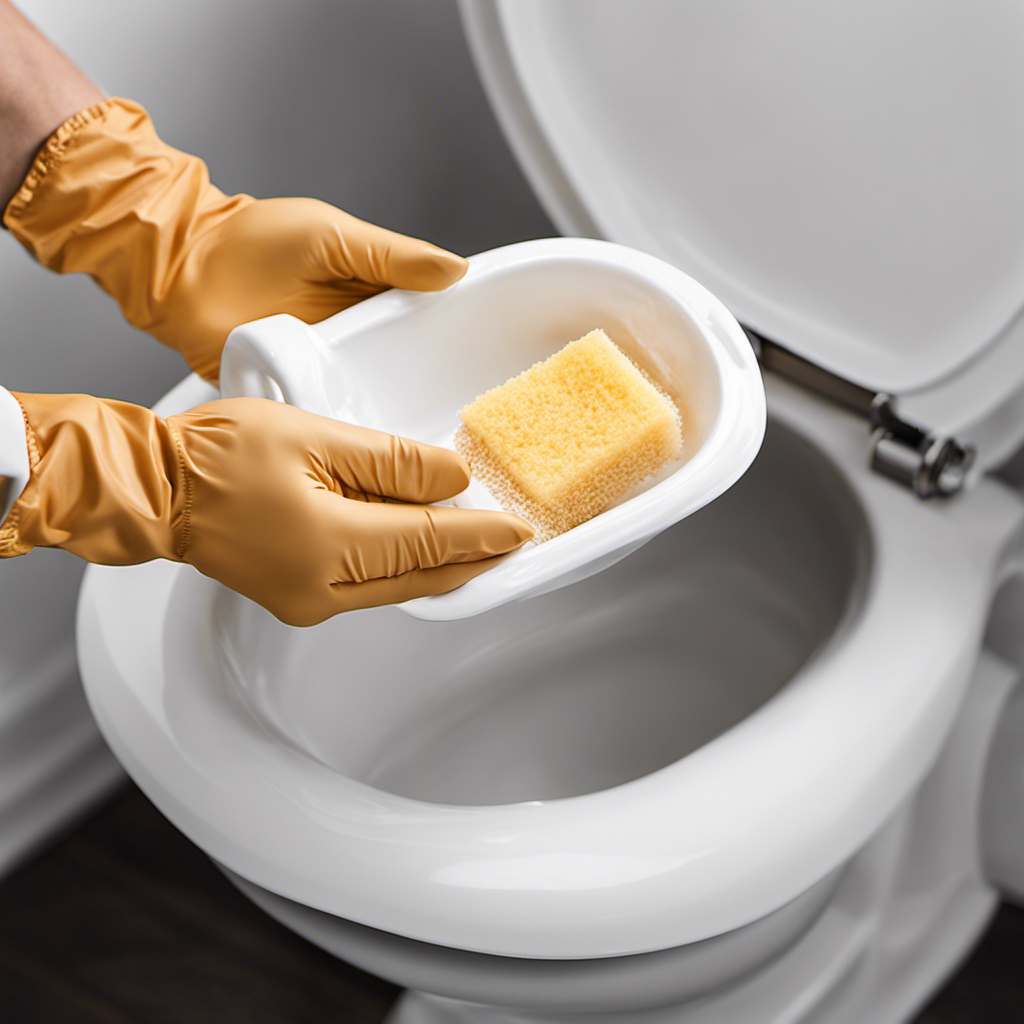Ladies and gentlemen, have you ever encountered the dreaded situation of a toilet bowl devoid of water? Fear not, for we are here to guide you through this plumbing predicament.
In this concise and informative article, we will explore the steps you can take to rectify this issue. From checking the water supply valve to inspecting the flush valve and flapper, we will equip you with the knowledge and mastery to tackle this inconvenience head-on.
So let’s dive right in and restore water to that bowl!
Key Takeaways
- Adjust the water supply valve to increase the flow of water and ensure it is fully open.
- Inspect and repair any leaks in the water supply valve and surrounding pipes.
- Check the flush valve and flapper for wear or damage and replace if necessary.
- Clear any clogs in the toilet bowl using a plunger.
Check the Water Supply Valve
How can we determine if the water supply valve is the cause of the toilet bowl having no water?
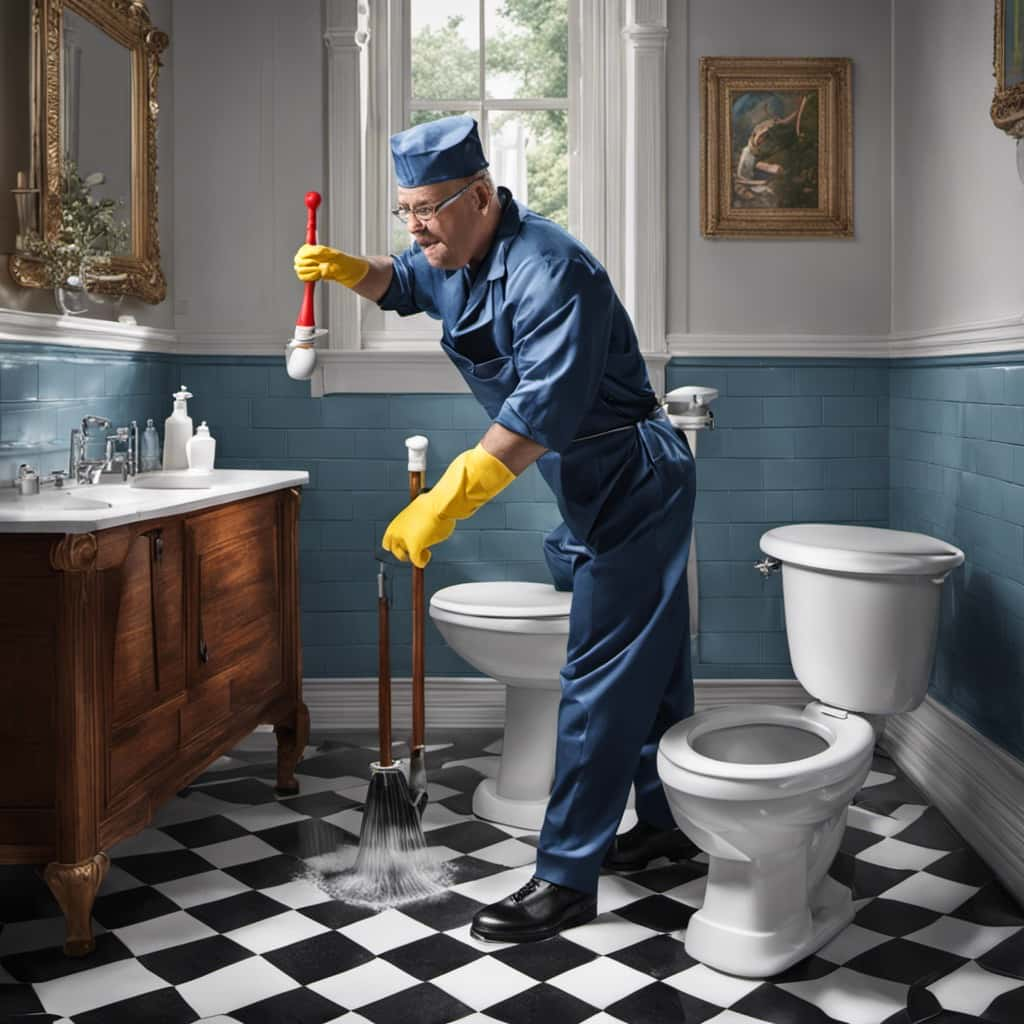
One way to check is by adjusting the water pressure. If the water pressure is too low, it could be a sign that the supply valve isn’t fully open. Try turning the valve counterclockwise to increase the flow of water.
Another important step is checking for leaks. Inspect the valve and the surrounding pipes for any signs of water leakage. Leaks can prevent the water from reaching the toilet bowl properly. If you notice any leaks, tighten the connections or replace any faulty parts.
Inspect the Flush Valve and Flapper
To inspect the flush valve and flapper, we’ll need to remove the toilet tank lid. The flush valve is responsible for releasing the water from the tank into the toilet bowl during the flushing process. Over time, the flush valve may become worn or damaged, causing water to leak or not fill the bowl properly.
To replace the flush valve, turn off the water supply to the toilet and flush to empty the tank. Remove the old flush valve by unscrewing it from the bottom of the tank and install the new one by screwing it in securely.
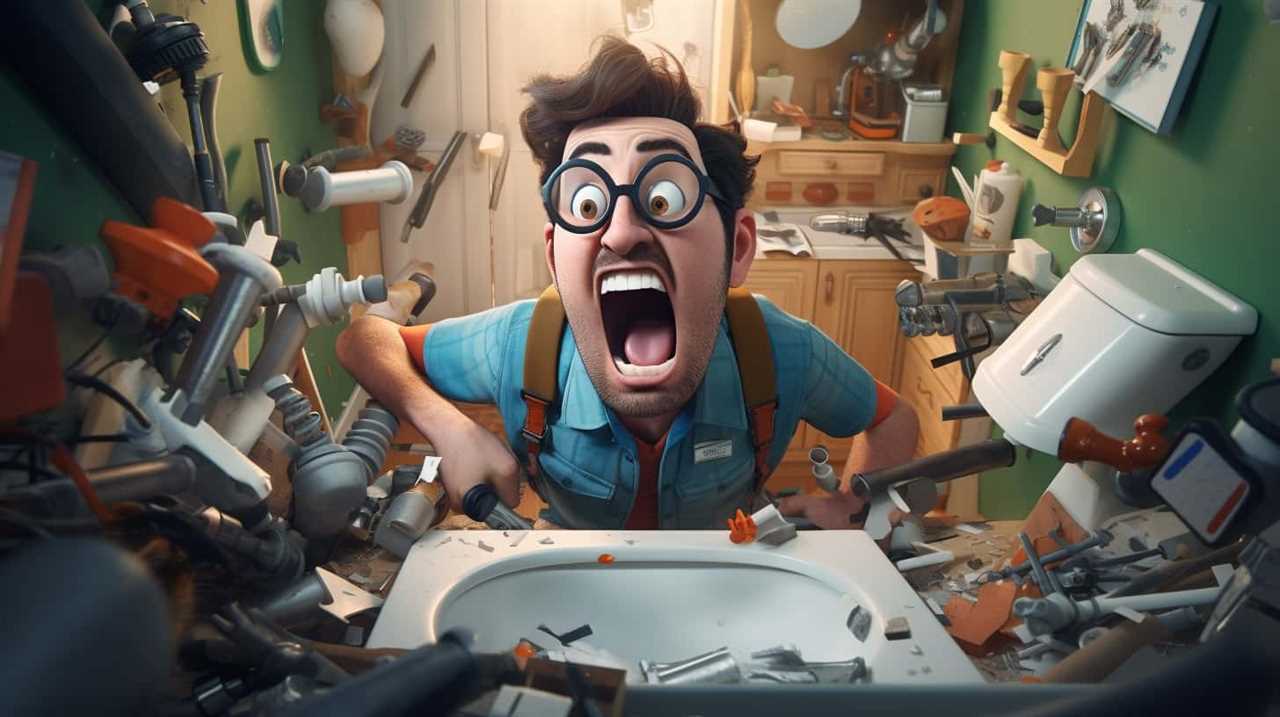
Additionally, it’s important to check the flapper chain. If the chain is too loose or tangled, it may prevent the flapper from sealing properly, resulting in a lack of water in the bowl. Adjust the chain as needed to ensure proper functioning.
Clear Any Clogs in the Toilet Bowl
To clear any clogs in the toilet bowl, we’ll need to use a plunger. Here’s how to do it effectively:
- Position the plunger: Place the rubber cup of the plunger over the drain hole in the toilet bowl, ensuring a tight seal.
- Create suction: Push down firmly on the plunger, then pull up quickly to create suction. Repeat this motion several times to dislodge the blockage.
- Test for unclogged drain: Flush the toilet to check if the blockage has been cleared. If the water drains properly, the clog has been resolved.
Once you’ve successfully cleared the clog, it’s time to move on to the next step: testing the fill valve and float. This will help ensure the proper functioning of your toilet and prevent any future issues.
Test the Fill Valve and Float
After clearing any clogs in the toilet bowl, we now need to test the fill valve and float to ensure proper functionality.
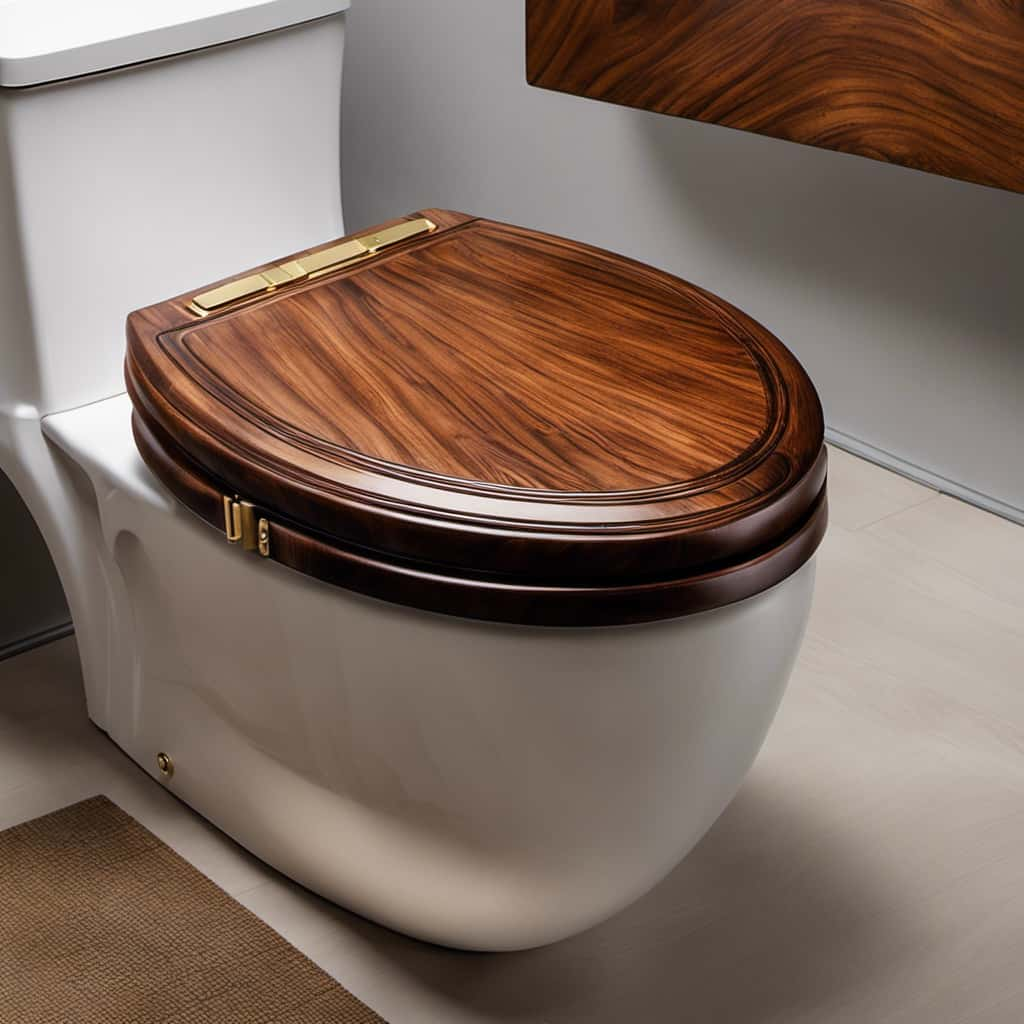
The fill valve is responsible for refilling the tank with water after each flush, while the float helps regulate the water level.
To troubleshoot these components, start by lifting the float arm to see if the water starts flowing. If it does, the float may need adjustment or replacement.
Next, check the fill valve for any signs of damage or debris that may be obstructing the water flow. Clean or replace the valve if necessary.
These troubleshooting tips are important for resolving common toilet problems.

Once you have tested the fill valve and float, it’s time to consider alternative flushing methods.
Consider Alternative Flushing Methods
Now let’s explore our options for alternative flushing methods to address the issue of a toilet bowl with no water. When faced with this situation, it’s important to consider water conservation techniques and eco-friendly toilet alternatives.
Here are three options to explore:
- Bucket flush: Fill a bucket with water and pour it into the toilet bowl with force. This can create enough pressure to flush down waste.
- Greywater usage: If available, use greywater from sources like rainwater or used bathwater to flush the toilet. This reduces the amount of fresh water used.
- Composting toilets: Consider installing a composting toilet, which doesn’t require water for flushing. It uses natural processes to break down waste into compost that can be safely used in gardens.
Frequently Asked Questions
How Do I Check if the Water Supply Valve Is Closed?
To check if the water supply valve is closed, we need to inspect it visually. Look for a knob or lever near the base of the toilet. If it’s in the "off" position, that’s likely the issue causing no water in the toilet bowl.
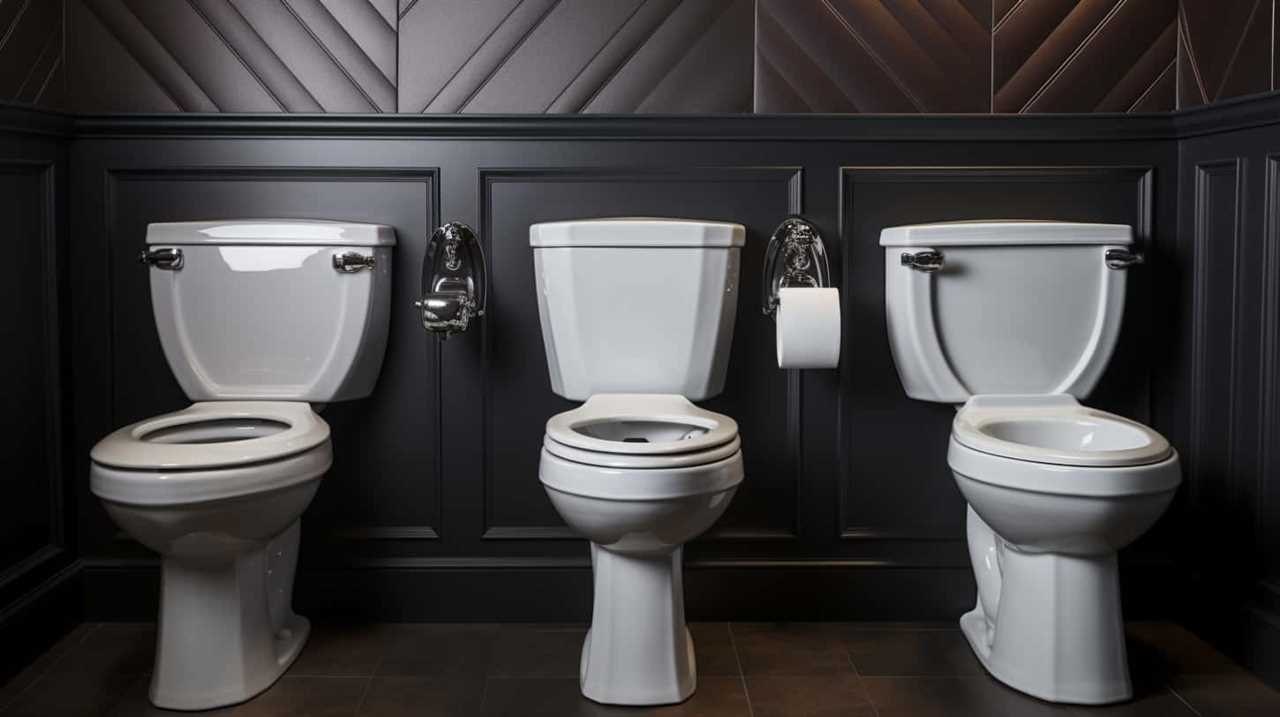
What Are the Common Causes for a Toilet Bowl to Have No Water?
Common causes of insufficient water in a toilet bowl include a closed water supply valve, a clogged or blocked water line, or a malfunctioning fill valve. Troubleshooting low water levels can help identify and resolve the issue.
Can a Faulty Flush Valve and Flapper Cause the Toilet Bowl to Have No Water?
Yes, a faulty flush valve and flapper can cause the toilet bowl to have no water. To fix this issue, we recommend flush valve troubleshooting and flapper replacement as necessary.
How Can I Clear a Clog in the Toilet Bowl if It Has No Water?
To clear a clog in the toilet bowl without water, we can use a plunger. It’s important to create a good seal between the plunger and the bowl. Apply firm pressure and use a plunging motion to break up the clog.
Are There Any Temporary Alternatives to Flushing the Toilet if the Water Supply Is Not Available?
There are temporary alternatives to flushing the toilet if the water supply is not available. One option is to use waterless toilets, which utilize a different mechanism to dispose of waste.

Conclusion
So, if you find yourself in the unfortunate situation of a toilet bowl with no water, don’t panic!
Start by checking the water supply valve and inspecting the flush valve and flapper.
Clear any clogs that may be causing the problem and test the fill valve and float.
And if all else fails, consider alternative flushing methods.
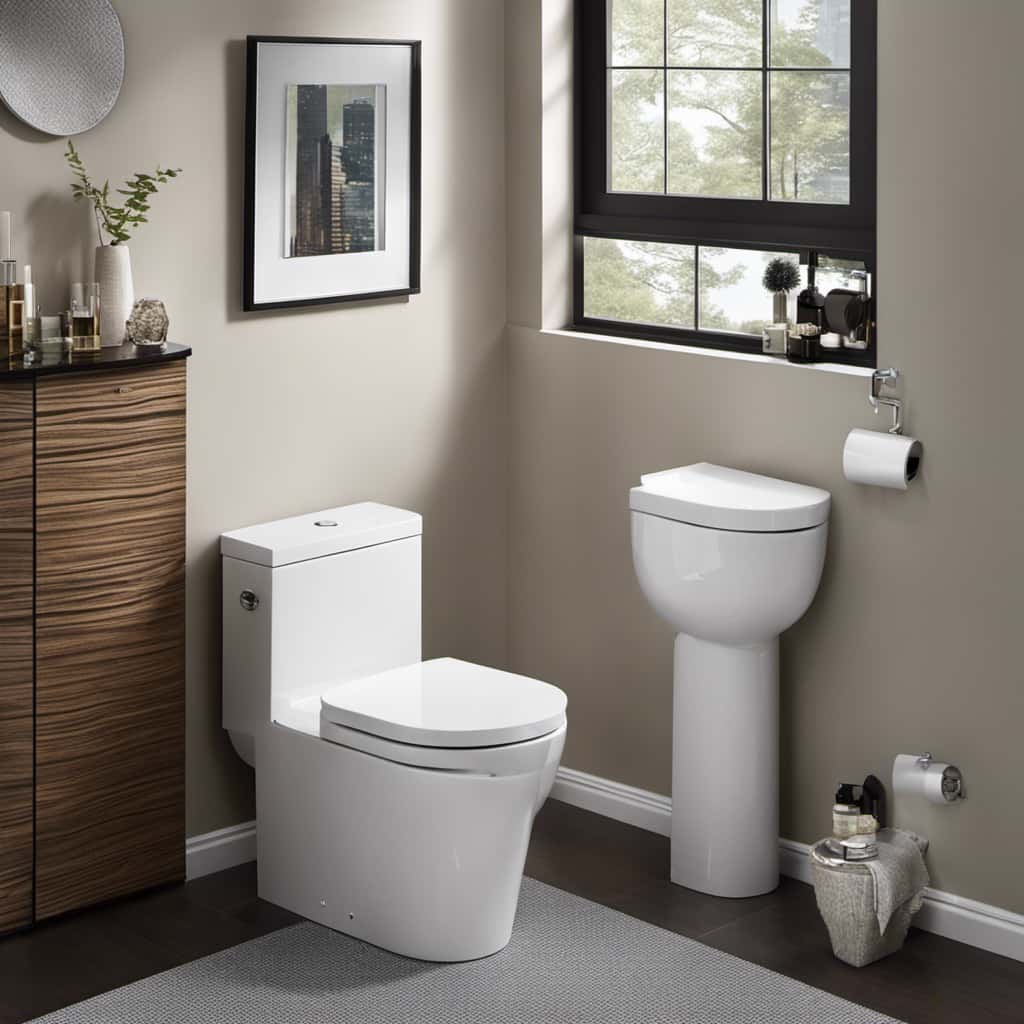
Remember, a little ingenuity goes a long way when it comes to solving toilet troubles.
Happy flushing!



